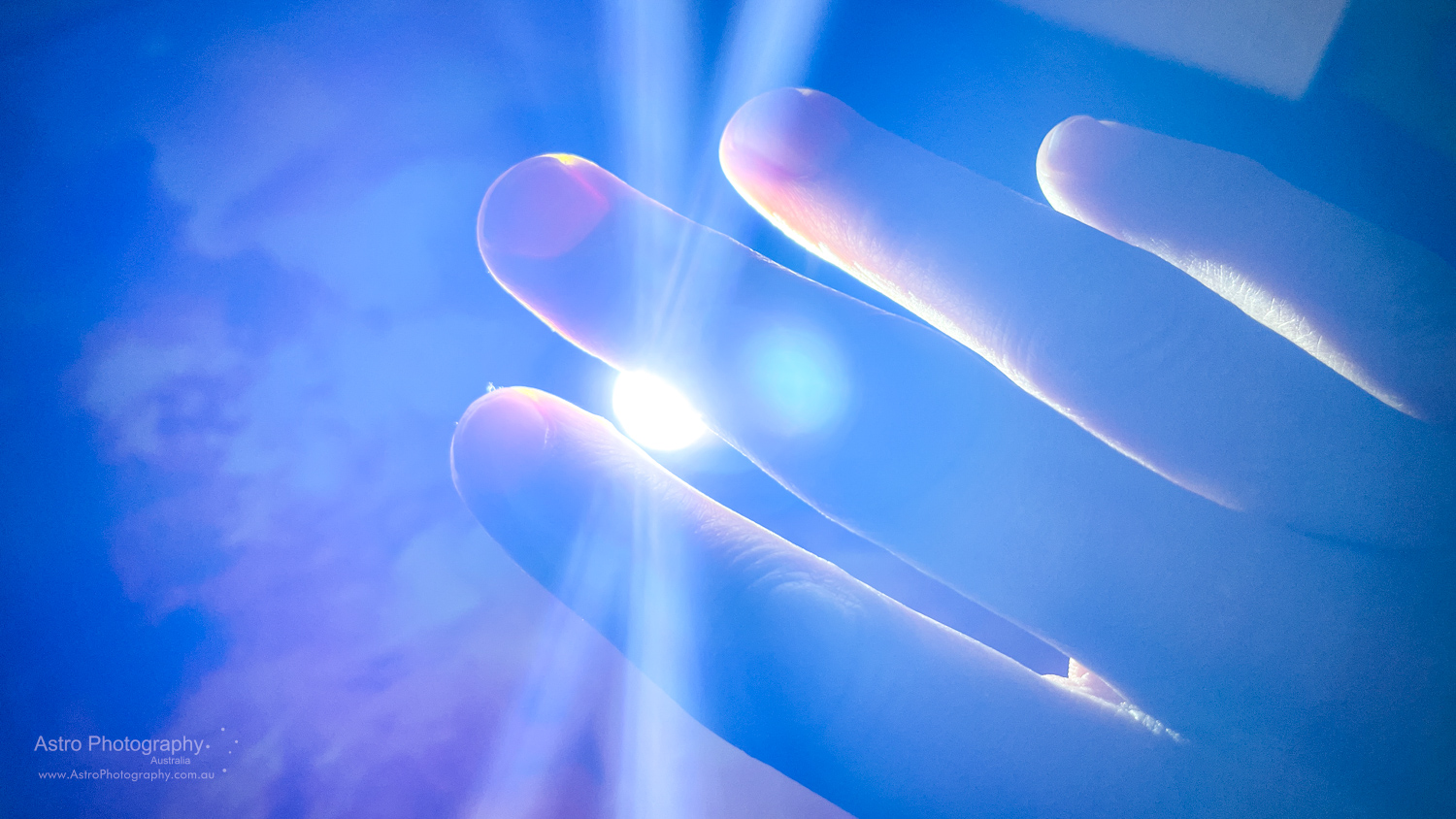it continues to amaze me how much equipment specifically made for astrophotography is produce with indicator LED lights bright enough to read by. LED lights which frequently impact your astrophotography. Lights such as on/off indicators, or mode indicators.
More understandable but no less frustrating is camera gear with lights that cannot be turned off. You know, those busy indicator lights which will splash some unwanted red in to your nightscape foreground, or that focus illumination light that just can’t be turned off or magically comes back on at the most inconvenient time!
My solution to such lights has always been: Electrical insulation tape. Specifically:
- Black electrical insulation tape where I am wanting to completely block the light
- Blue electrical insulation tape where the light is still required but needs to be dimmed
So here are some frustrating examples I have solved with this method.
Infuriating LED’s #5
Focus illumination lights. While in theory they can be disabled in most camera bodies, they often find a way of coming back on when you least expect them. You know how it happens – you have a family evening event and foolishly think it will be useful to turn on the focus illuminator, of course forgetting to turn it off again when you next rock up at a astro star party, only to cause mass blinding of your unsuspecting fellow astrophotographers. I can hear the dazed screams now.
The solution: Black insulation tape. Just never use that light. If you have a modern nightscape DSLR you can focus in low light anyhow.

Infuriating LED’s #4
Countdown delay flashing lights.
While the same light as often used for focus illumination, you might well discover that it is simply impossible to disable the light when using a delay (eg 2 second, 5 second or 10 second exposure delay, using in-body functionality). Of course what we all need is 10 seconds of a bright strobe illuminating our unsuspecting subjects before, now finally and completely enraged, being photographed.
The solution: same as for the focus illuminator – completely cover it. You will never need it.

Infuriating LED’s #3
Intervaolometers and remote triggers that don’t understand they may be used for astrophotography. Not only the hand controller but the wireless “dongle” attached to the camera. The flashing LED on the front of these will easily reflect on to objects, showing up in nightscapes.
The solution? Black electrical insulation tape obscuring all but a very thin slither of upward facing (distinctly NOT frontward facing) light. Enough light remaining visible to remind me that I need to turn it off when it goes in to the bag.

Infuriating LED’s #2
Vixen Polarie, of all the brands, should have known better. The lights on their Vixen Polarie (mind you, now superseded model) are bright enough to reflect and intrude upon any nightscape.
I’ve had this green light bounce off tripod legs, filters, t-shirts, just about anything, finding it’s way in to nightscape photos.
Solution: black-out except for a tiny little pin prick of light which is still bright enough to indicate it is on star tracker mode, to remind me to turn it off. You might wonder why I didn’t use blue – well the green light doesn’t shine through the blue well enough to be effective yet tinted. Perhaps I should try another colour?


Infuriating LED’s #1
The most irritating lights by far, are battery indicator lights on head torches. This current model Black Diamond head torch is absolutely fantastic in every single way, EXCEPT that every time you turn it on or off it insists on illuminating battery indicator LEDs that are bright enough to read by and completely destroy your vision when they shine down on to your glasses catching the lenses and frames full of light!
Every. Single. Time. that you turn your head torch off, you get dazzled for 3 seconds unable to see beyond your glasses. This was without a doubt the most infuriating LED in this class.
The solution: 3 (yes that’s right, it takes three!) layers of blue insulation tape to dim the lights to a level they are still easily visible but not disruptive at night.


Make your gear work for you
Take the time to customise your astrophotography gear to make it work for you. Reduce the frustrations that can occur when trying to capture awesome photos of the night sky. Remember to:
- Block unwanted lights that bug you
- Customise your camera to make it work efficiently for you in the dark
You can take the time to do this on your couch at home. Turn off the lights and test it out. You’ll thank yourself later.
